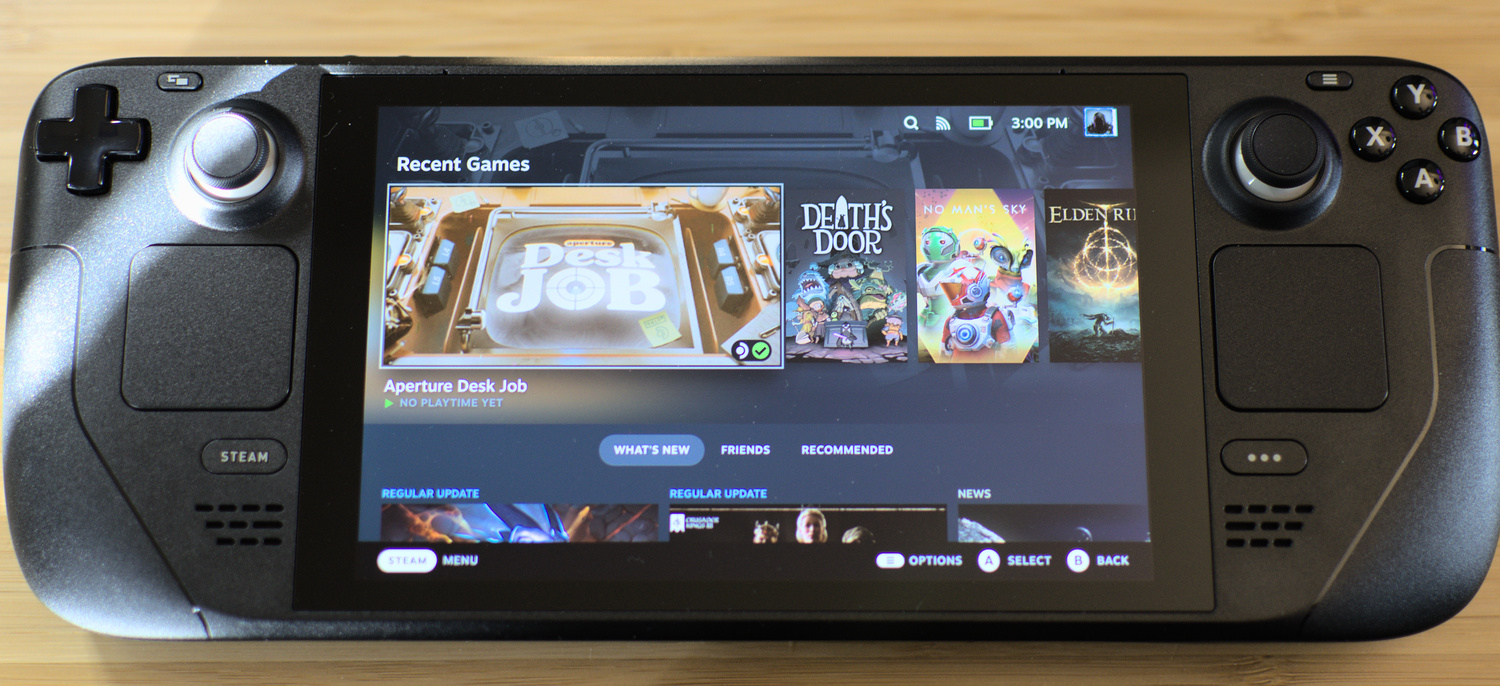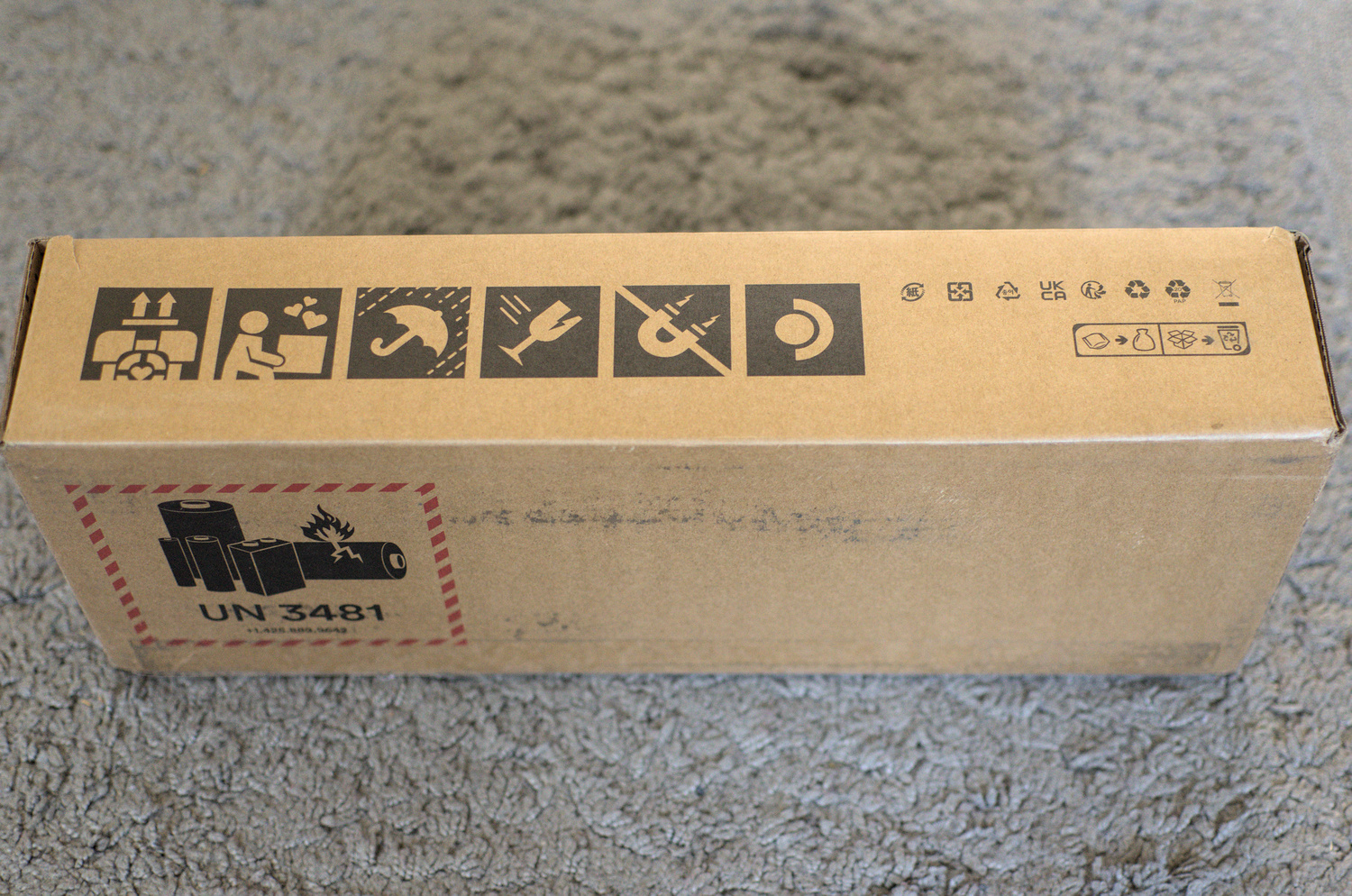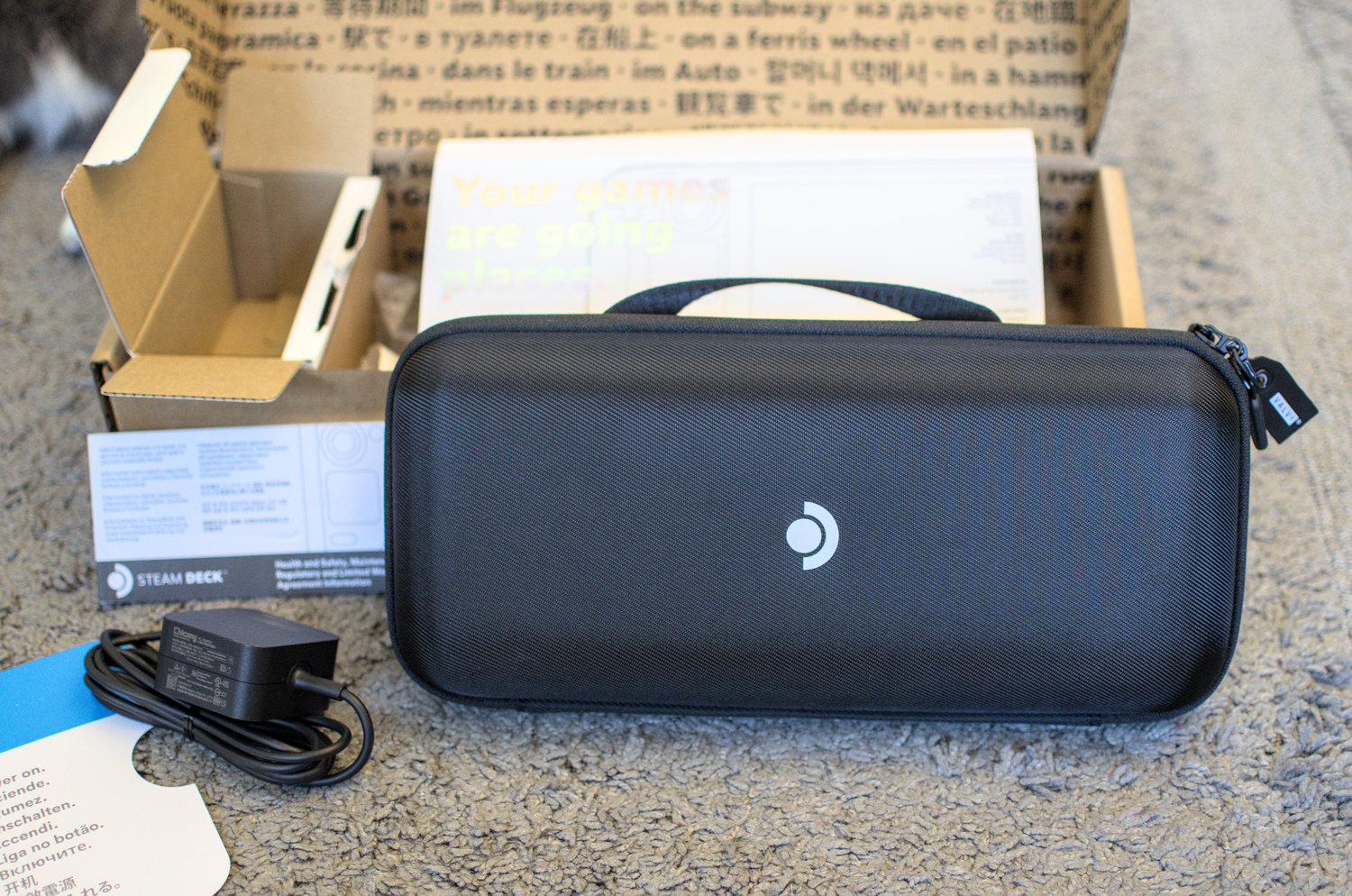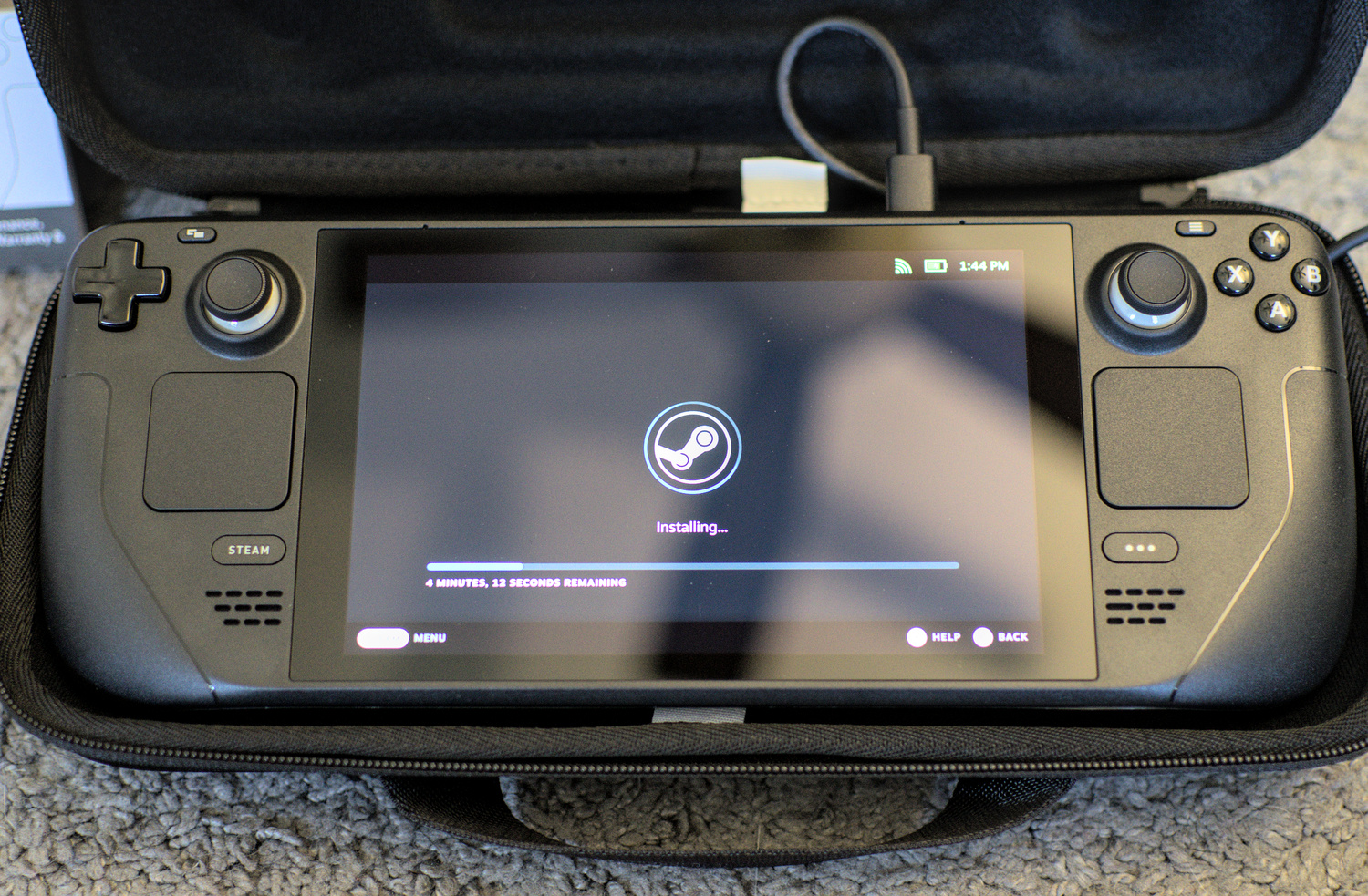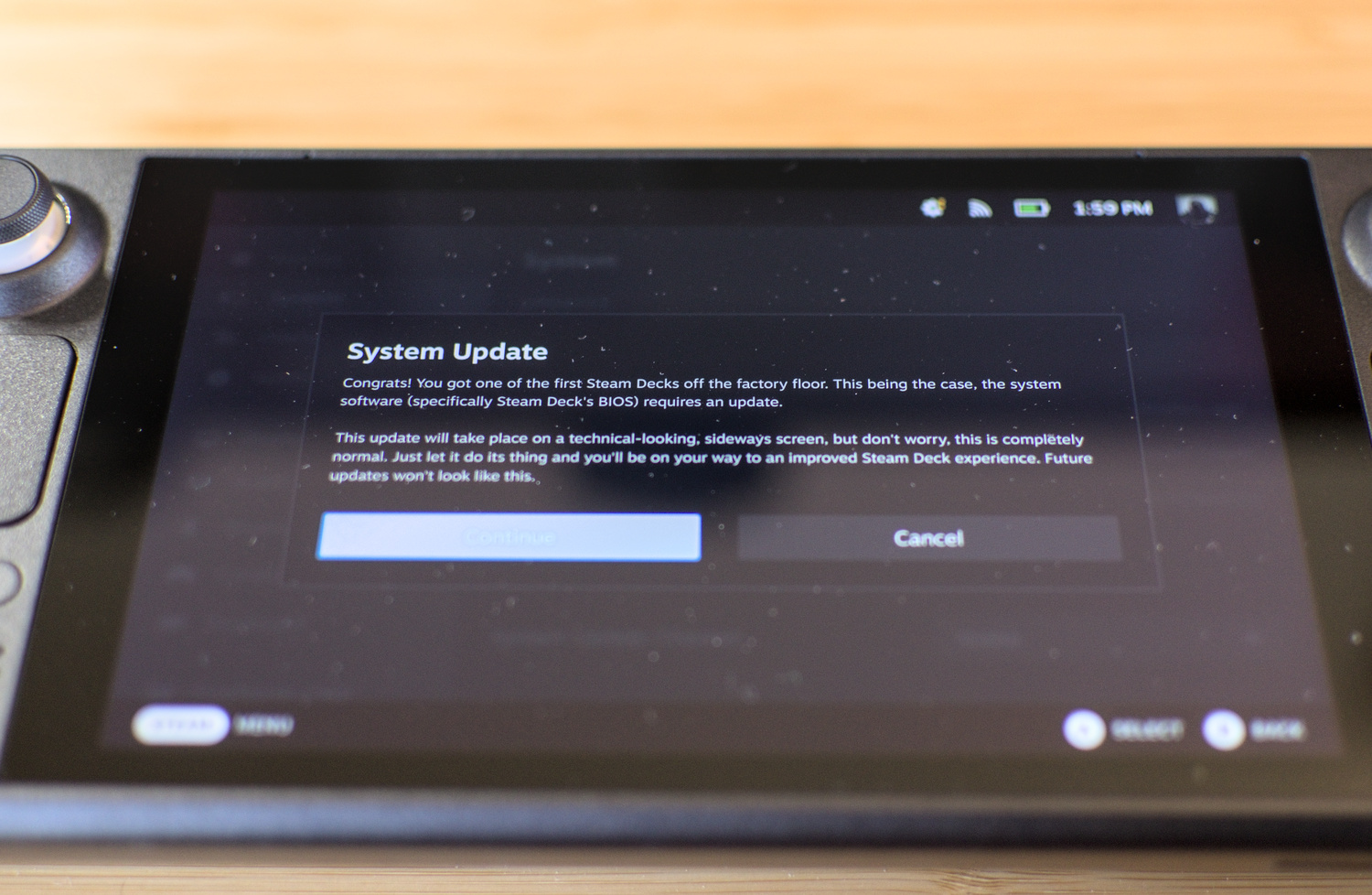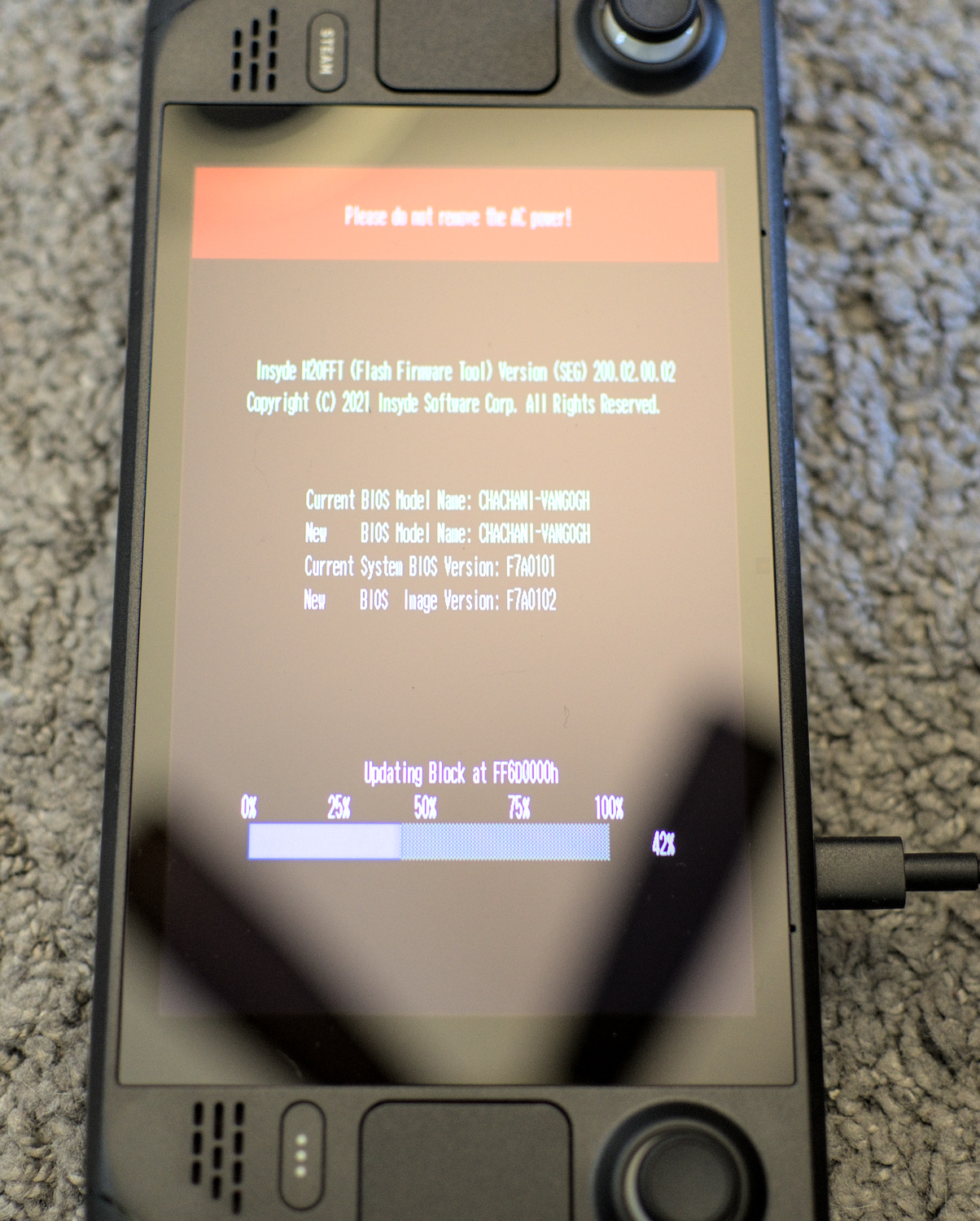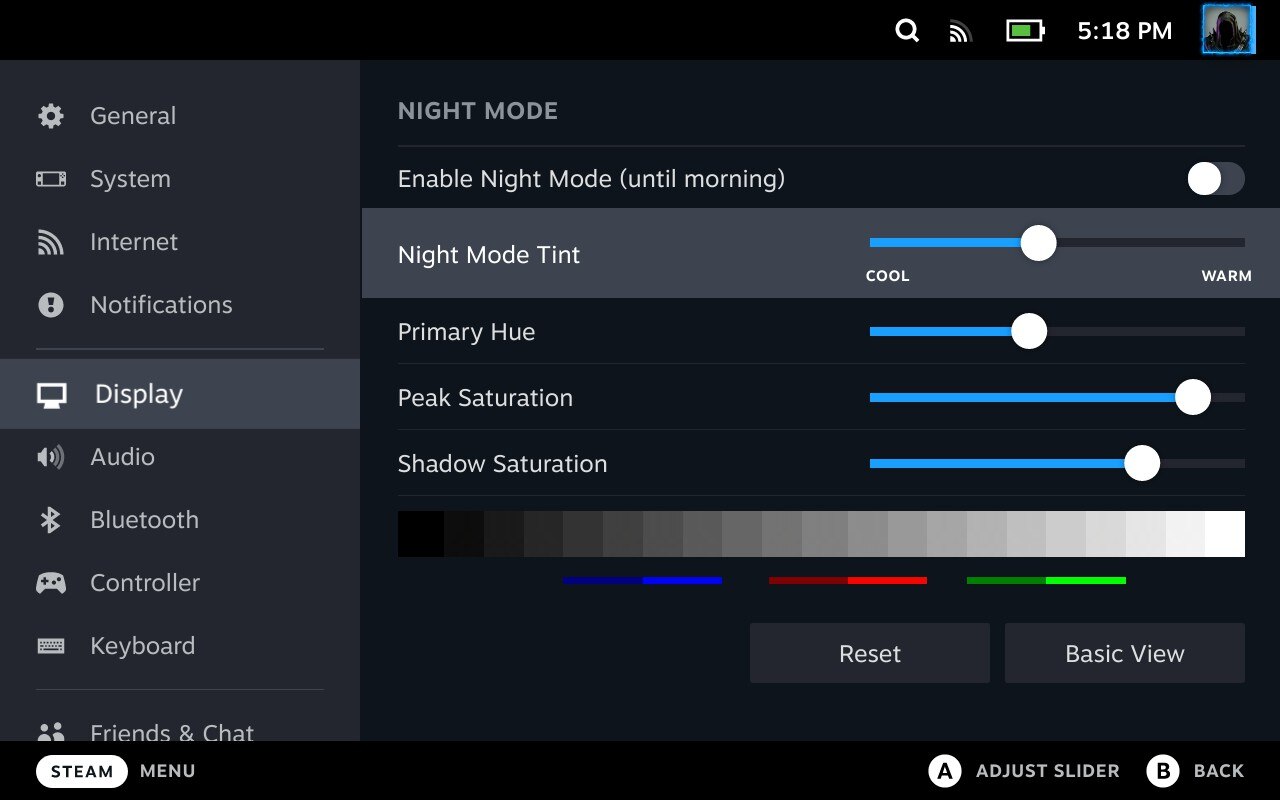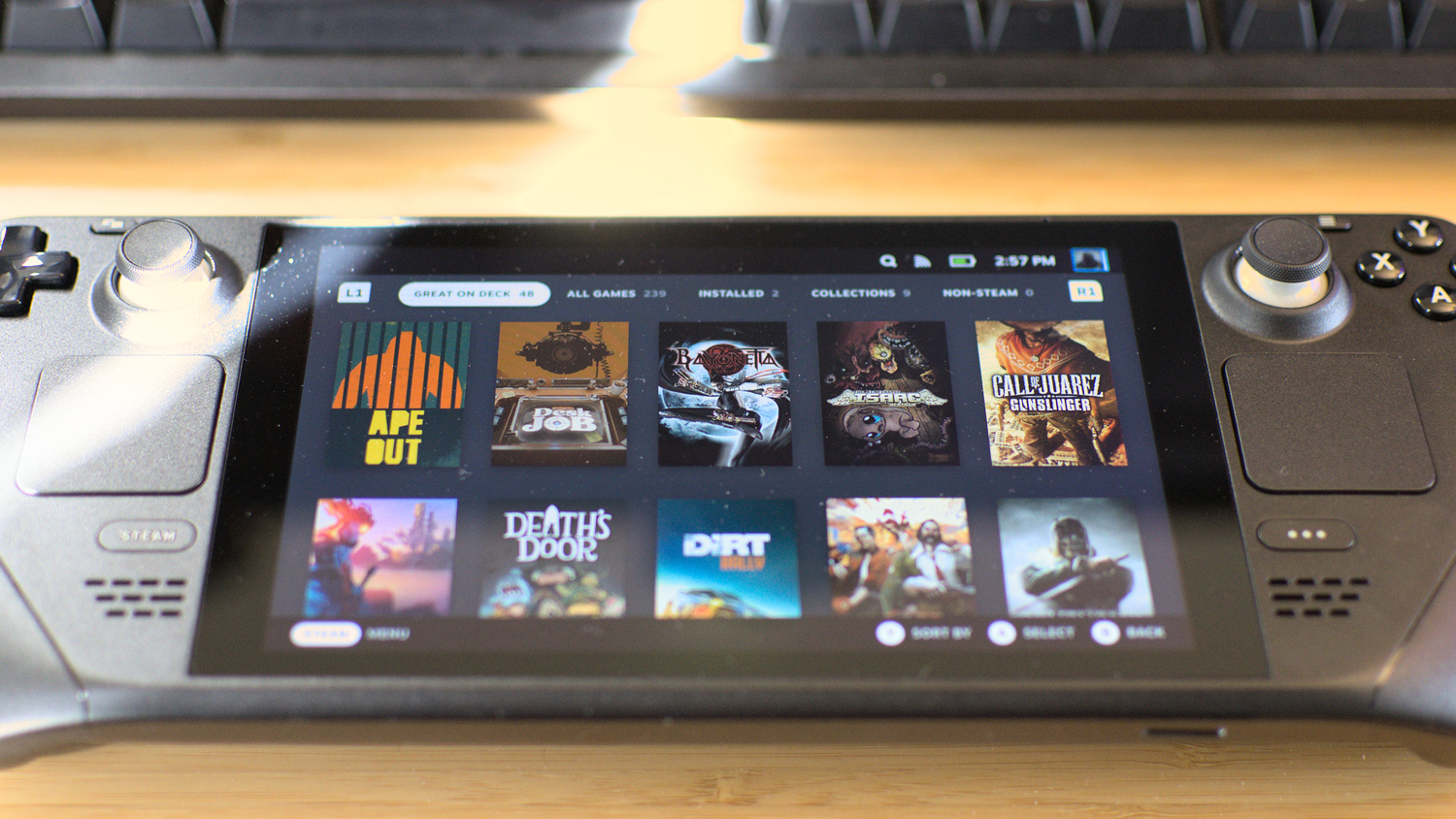Deck First Impressions
Something is definitely strange in the neighborhood: FedEx was swift and perfect, delivering my Steam Deck during lunch on Friday! I got the order email on Monday in the second round and tried to prepare myself to wait for the next week to receive it. Instead, I was pleasantly surprised (we’re cool now FedEx!) and got the whole weekend to play on my new Steam Deck. I’ll have lots more to come, but first, I wanted to share some early impressions.
Before diving in, let me say that I (and I think the rest of the staff here) have been feeling a bit left out of the big Deck launch. We did not have a review unit, and while I was very lucky to get in a reservation so quickly, we did not have a unit in the first round of orders either. This is one of the most significant events in Linux and, more broadly, PC gaming for a very long time, sure to go down as a before/after type moment.
As one of the few dedicated Linux gaming websites this launch has been especially meaningful for us, having seen how Wine, Proton, DXVK, Valve, and more have grown over the years and finally hit the mainstream gaming spotlight (and, we hope, continued success). It has been difficult to feel like we are on the sidelines, even as we have done our best to cover the fast-paced and exciting times from the Deck announcement to now.
But now we (I mean me, sorry not sorry Ekianjo, cowkiller, and Patola!) have one literally in our hands! I think the biggest benefit to being a bit later to the party is that what we are seeing is more reflective of what the vast majority will experience after the big changes Valve was making leading up to launch. Of course they will continue, and while updates are still coming, it is not the huge continuous stream of changes reported by reviewers leading up to the launch.
Also, I hope getting coverage from a fellow longtime Linux-only gamer will provide some new insights into what to expect from the Steam Deck. Spoiler alert: yes, I already tried Emacs on it.
I won’t assume you’ve devoured every review and video about the Deck so far, but I will try to highlight what I’ve not expected going in or think is more important to still note. So let’s get to it!
The Rough Spots on the Deck
I’m a “bad news first” kind of person, so I’ll lead with some (pretty minor, overall) issues I’ve noticed so far. First, on the hardware front:
- Fan whine: The fan is pretty annoying in its pitch, loudness, and frequency to come on (but not just stay on, either). I think some of this can be solved with better power management and fan profiles. And overall this is more when you are not in a game, as the speakers are rather good and plenty loud. Still, it was one of the first things I noticed, which is not what you want.
- Steam and Quick Access Buttons: As noted in some other reviews, they don’t have much “click” to them. Not a huge deal, but with the rest of the buttons having distinct action, it is a minor oversight in construction. You won’t use these nearly as much as the main controller buttons, though they do get regular use.
- Battery life: I think the early reviews covered this well, but is still worth noting. Playing something like Elden Ring at max settings, even at 30 fps, will give you a minimal battery life of about 1.5-2 hours. A much more reasonable 4.5 hours on something like Death’s Door and easily 6+ on lighter fare. Still, as I mentioned going in, you are always going to want more battery.
- Size: As expected, the Deck is a biggun. It felt a bit heavier than expected but balanced. It is long. The included case is nice and protective, but does add even more bulk to bringing it along in a smaller bag. Some people online seem to think the big gap behind the rear stretchy strap is for the charger, but pretty sure it is just a luggage loop really. There are no pockets.
On the software side I expect further improvements in updates from Valve, but I did hit a few unexpected rough spots:
- Desktop mode: I’ve only briefly tried this (I need a dock) but my first try was a little janky. The on-screen keyboard, which has a handy shortcut of Steam+X, didn’t want to show or was very delayed in my first session. Online, others seemed to need to make sure Steam was running still and that the desktop controller configuration was set (both were for me); it did work later, maybe I had to reload after an update. I also had it flash between what I think was Steam and a browser maybe, when I tapped on a YouTube link from a game’s page in the regular Deck UI.
- Some interface confusion: This was also noted in many reviews, where it can be difficult to remember where certain settings are, or Steam not remembering where you were in a previous screen, or just generally a lot to navigate. I appreciate all the options and the Quick Settings access through a button is great, but I think feedback from the masses getting a Deck now will help make it more intuitive. As an example, the gyro settings in the controller configuration are detailed, but confusing in how some things are worded (what the gyro is inputting versus how you activate it, for instance).
- Frame limiting: This is not a rough spot, per se, but more of a suggestion. Much as I love smooth 60+ fps, for something like the Deck, I think a default of 30 fps is a good trade-off. The battery life is often much improved, so making this a default while letting a user easily flip it to unlimited (or 60 fps, really) I think would be a good choice. Make the out-of-the-box defaults favor a balance towards more battery life without severely degrading the experience.
This is not to downplay what we in the Linux community know needs constant work, like Proton. But, as I will say a little more about below, a lot of what we expect to tweak is smoothed out on the Deck already.
The Unexpected Highlights
I tried not to get swept up in the hype train, yet devoured all the Deck content I could leading up to getting one in my hands. And still, I was still pleasantly surprised in many areas:
- Ergonomics: Overall, the reviews have mentioned how well laid out and comfortable it is, with minor complaints. The biggest (ha!) I’ve seen is some worry for people with smaller hands. As a human with small-to-average-sized hands, I was slightly concerned. Fear not, I find it fits perfectly in my hands, really well done there by Valve. The more horizontal layout is a tiny adjustment; all the controls work really well. I’m happy to have plenty of back paddle buttons (like the Steam Controller) but haven’t tested them much. They seem well-positioned, right where my fingers naturally rest, if on the stiff side. This should prevent accidental pushes.
- Screen: As I mentioned in the lead-up to launch, I was prepared to be disappointed by the screen. Perhaps lower expectations help, but I found it to look good: enough brightness, contrast, fine viewing angles, and at the distances used adequate sharpness. I have the standard glossy screen and find the reflectiveness pretty much the same as any other screen and was usable outside in a quick test. There’s also a built-in and customizable night mode setting (warmer color balance) with a good range of very dim settings for playing in a dark room. Overall, I’m happy with the Deck’s screen!
- Instant suspend/resume: Wow, is it like magic! The suspend feature works really well in my tests so far, whether in the Steam interface or in the middle of an (unpaused) game, taking just a couple of seconds. Waking the system up is even quicker. This has led to a gaming device that you can pick up and put down quickly and easily, really lowering the barrier to squeezing in a little gaming at any time.
- Performance: We knew the hardware can do a lot going in, but I still found myself surprised I could just install Elden Ring, change no settings, and have it play beautifully. I didn’t expect going in to want to play many triple-A games on the smaller screen…but perhaps I’ll play more than I thought.
The Rest of the Deck
While there’s much more to come in our future coverage, including a full review, let me hit on a couple of questions that came up from our developer kit impressions that our source couldn’t answer at the time. The settings button on a game page exposes a “Developer” menu that currently just has “Delete Proton files” which will be handy for tweakers. There are also the usual game settings to change launch options or the compatibility tool used (Proton versions usually). And as I think has been pretty clear in the coverage so far, the Verified status and rating details are all front and center and easy to filter within the main interface.
I’ve gotten this far without giving my overall impressions at this (early) stage. And from someone that has never had a handheld besides a phone/tablet (which I almost never use for games) and wasn’t given a review unit.
So far, yeah, Valve nailed it. Having one in my hands, I can say the Steam Deck really does mark a before and after moment for PC, and especially Linux, gaming.
There are the little touches, like the rather nice included carrying case that has a cloth strap to make it easy to lift out the Deck from the contoured interior. The Deck itself is a slightly textured matte hard plastic that will show some dust but not fingerprints. Proton version 7.0-1 is enabled by default for all titles with no tweaks needed for Elden Ring and nice default controller profiles for something like Hexcells which is much older and never had controller support. Yes, those trackpads are great for the mouse input with nice haptic feedback for some texture. The gyro on thumbstick touch is a nice addition, though I haven’t played with gyro controls yet. The care for the Deck startup and suspend animations, even a warning about initial updates looking weird, speaks to the overall polish Valve has done, even though there’s more needed. Compared to what Linux users are used to, it really is a console-like experience that “just works” much more than I think we expected.
So far I’ve been trying out Elden Ring (Verified), Death’s Door (Verified), Monster Train (Unsupported), Roguebook (Verified), Horizon Zero Dawn (Verified), Aperture Desk Job (Verified), Hexcells Infinite (Unknown), and Tainted Grail (Unknown). Everything has been working great other than the Monster Train intro video playing upside down (a known issue, but the fact that it now works at all without tweaks is a nice step up) and a random crash on Roguebook (which uses Proton rather than the native version for some reason, clearly indicated on the game page). It is all very smooth and impressive; no tweaking needed in what I’ve tried so far. Even downloading a game but not yet launching it, going off Wi-Fi to a nearby park, worked just fine for the initial install and playing.
It is not perfect, but Valve has shown they can learn from the missteps and successes of their past, from Steam Machines and the Steam Controller, to the Index. There’s a lot we would want in a future Steam Deck, chief among them more battery (that is easily replaced), smaller size with a better and bezel-less screen, and software improvements coming from the game developers directly. Still, there is so much they’ve gotten right in this first iteration.
I can’t wait to play more with the desktop mode. Even with the limited input of the controller/on-screen keyboard, it was quick to find and install the only thing I need: GNU Emacs! I tested that it works, firing up Tetris, though of course, couldn’t do much without proper input. I’m sure I can find some controller interface someone has done for Emacs. There’s a lot I want to dig into and see behind the scenes.
For now, let me leave it at that. Going in with realistic expectations is always key, but much as I tempered my excitement, I still had high hopes. And those were mostly met or exceeded.
Great job Valve! I can’t wait to hack on the Deck more and write about it but right now, I’m just itching to turn it back on and “test” it some more.

